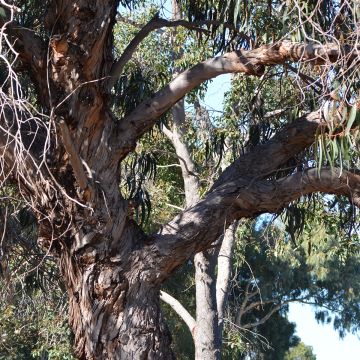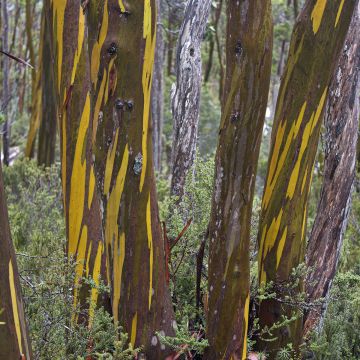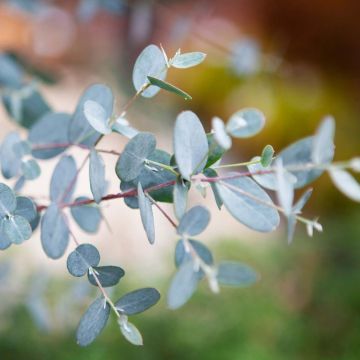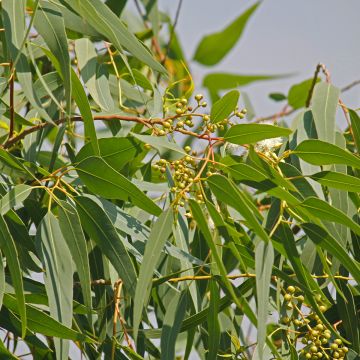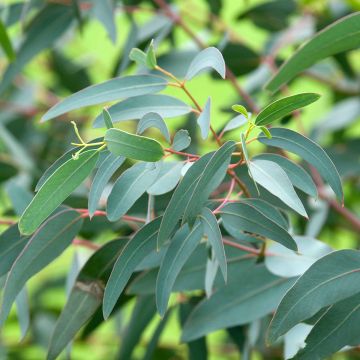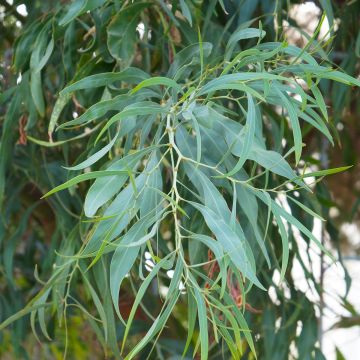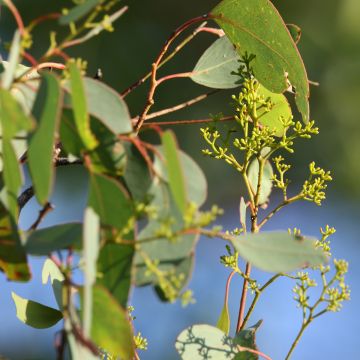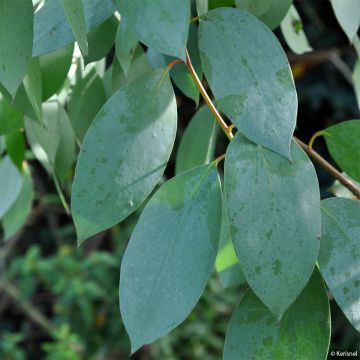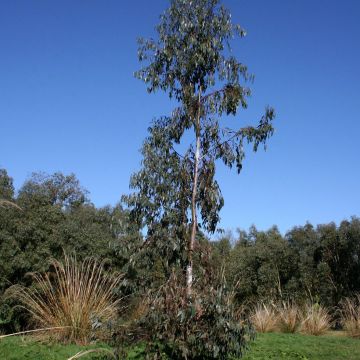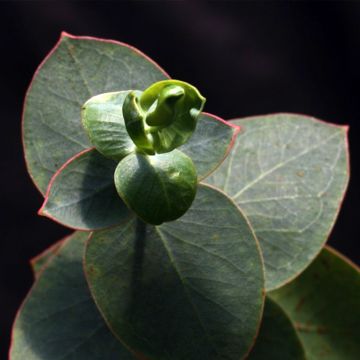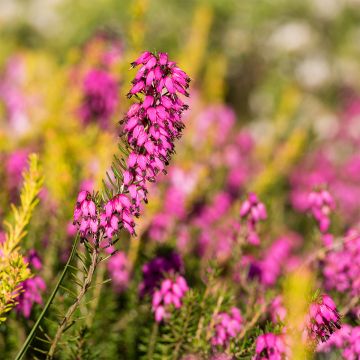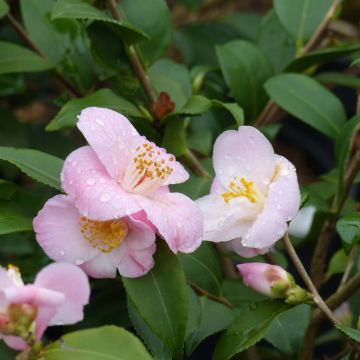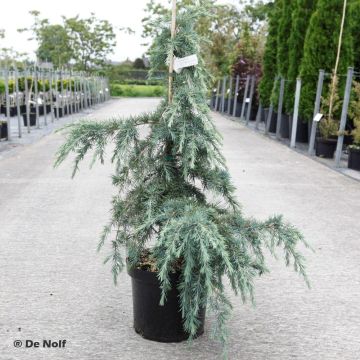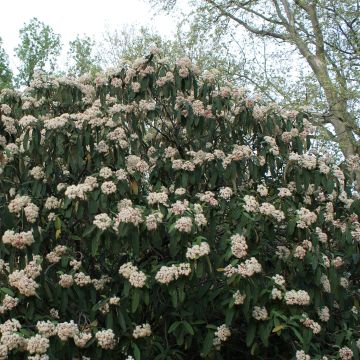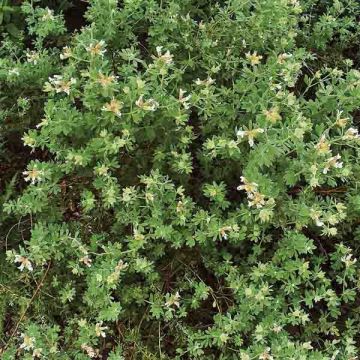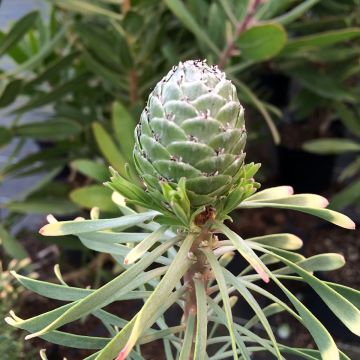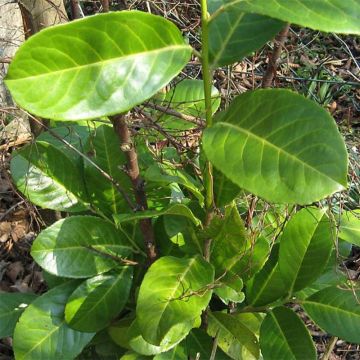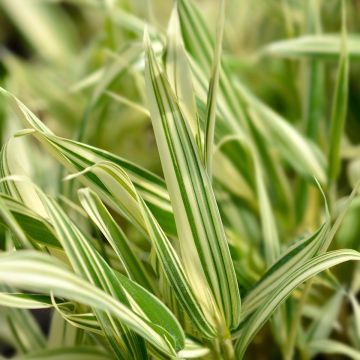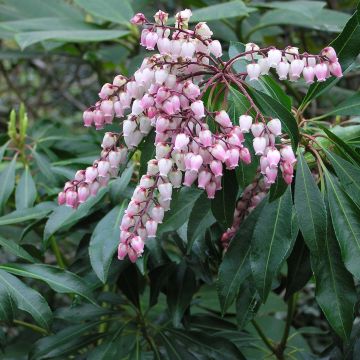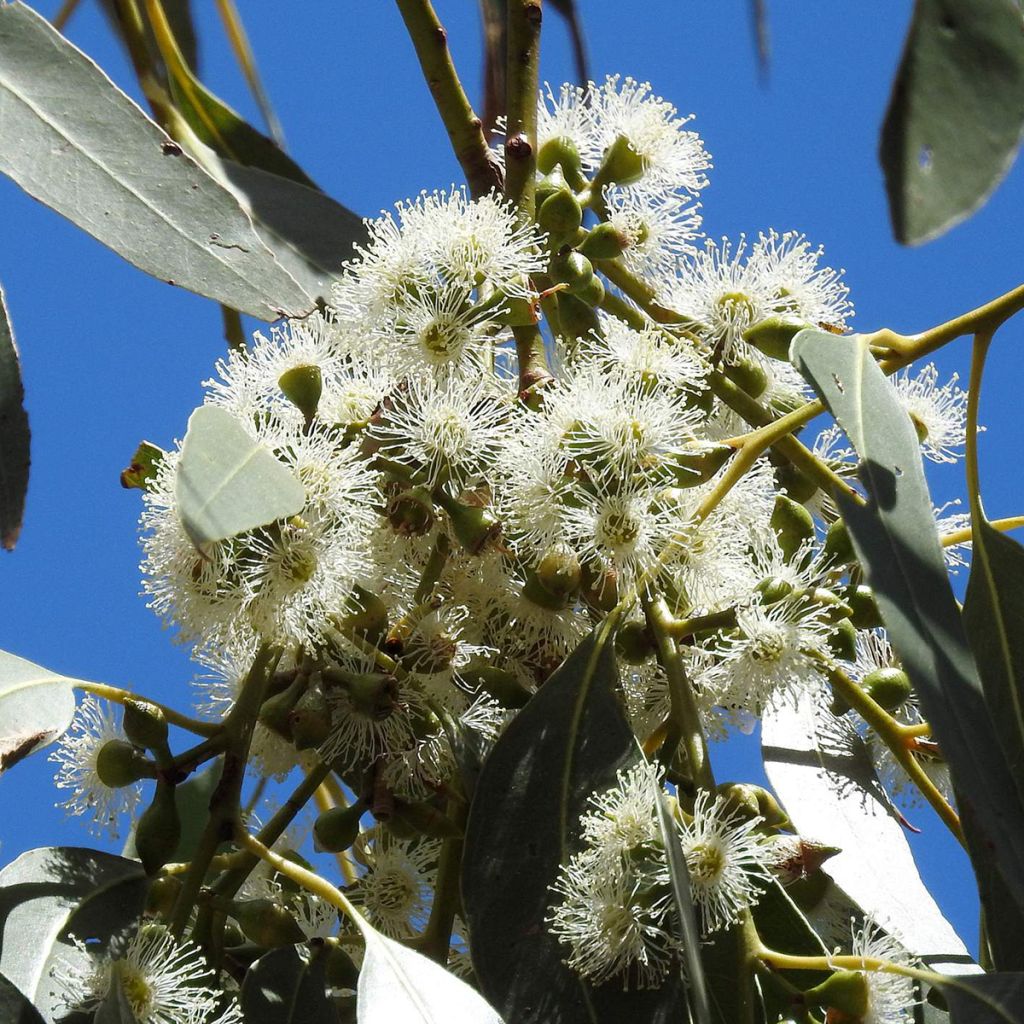

Eucalyptus aggregata
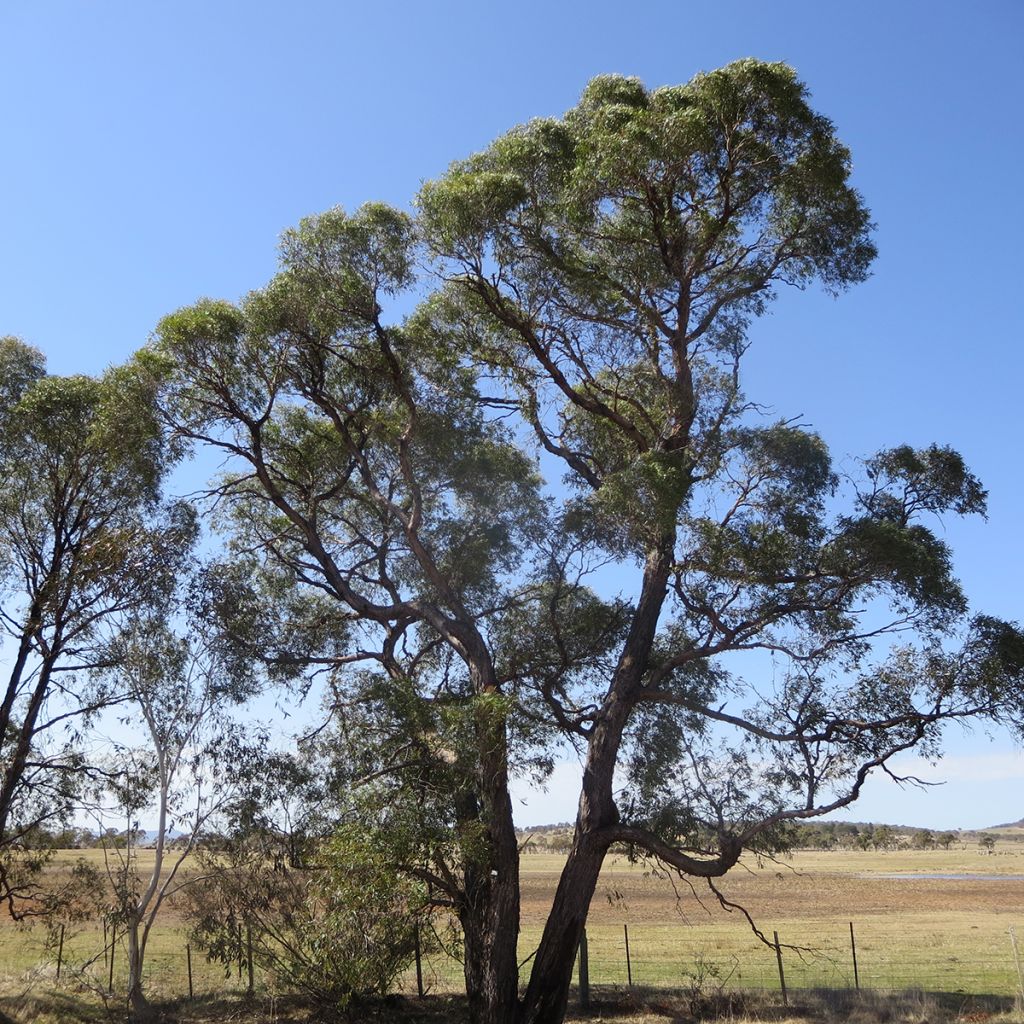

Eucalyptus aggregata
Eucalyptus aggregata
Eucalyptus aggregata
Black gum
This item cannot be shipped to the selected country
Delivery charge from €5.90
More information
Schedule delivery date,
and select date in basket
This plant carries a 24 months recovery warranty
More information
We guarantee the quality of our plants for a full growing cycle, and will replace at our expense any plant that fails to recover under normal climatic and planting conditions.
From €5.90 for pickup delivery and €6.90 for home delivery
Express home delivery from €8.90.
Does this plant fit my garden?
Set up your Plantfit profile →
Description
Eucalyptus aggregata or Black Gum (not to be confused with the Nyssa sylvatica), is a species native to Australia. It belongs to the family of swamp gums. It is a tree with a beautiful shape and an open and spreading crown that casts a light shadow. Its silhouette is elegant and graceful. The arching branches bear dense foliage in clusters of lanceolate, matte or satin green leaves. Its bark is very rough and deeply wrinkled. Its beautiful white pompon flowers are often seen during winter. It grows well in ordinary, heavy, clayey or limestone, moist soil, always in the sun. It is robust and hardy down to about -15°C (5 °F).
Eucalyptus aggregata is an endemic species of southeastern Australia, New South Wales, and Victoria, excluding Tasmania. Like all Eucalyptus, it belongs to the myrtle family. Its growth rate is moderate for a Eucalyptus, around 1m (3 ft 4 in) to 1.5m (4 ft 11 in) per year. It eventually forms an elegant tree with a rounded crown measuring about 15m (49 ft 2 in) in height, not more than 20m (65 ft 7 in), with a spread of 8m, depending on the growing conditions. Its bark is brown and rough. The juvenile leaves are bronze and then turn dark green. The adult leaves are pendulous, larger, thinner, and thicker, and lanceolate in shape, measuring up to 13cm (5.1 in). They have a dull, matte, or satin green colour. When crushed, the foliage emits a typical Eucalyptus scent. Flowering occurs from November to May, depending on the climate and the year, typically in February-March. The flowers are grouped in clusters of 3 at the axil of the leaves. This eucalyptus has a lignotuber just below the surface of the soil. This organ allows it to regrow from the stump in case of severe frost, fire, or hard pruning. The plant also produces numerous shoots from dormant buds located under its bark, which allows it to respond very well to coppicing and pollarding.
Eucalyptus aggregata is a beautiful tree to plant in isolation. It brings an elegant and poetic touch to the garden and provides good firewood. If necessary, it can be planted in marshy soil for drainage purposes. It is easy to maintain and can be easily contained through pruning. Finally, it is an ornamental plant at all stages of its growth, both as a young plant and as an adult. It is undemanding in terms of soil, tolerating clay and some limestone.
Report an error about the product description
Eucalyptus aggregata in pictures
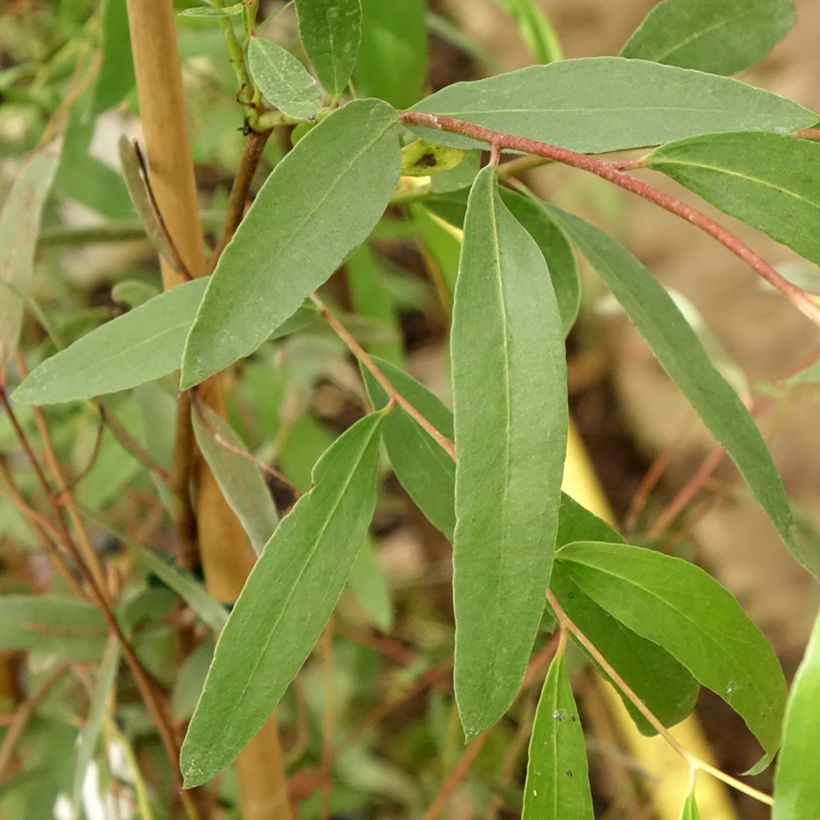



Plant habit
Flowering
Foliage
Botanical data
Eucalyptus
aggregata
Myrtaceae
Black gum
Australia
Other Eucalyptus
Planting and care
Eucalyptus aggregata is best planted in early autumn or early spring, in well-prepared soil, not too dry but moist, and in a very sunny location. Clay or loamy soils, even limestone, are well tolerated. However, this species does not like very hot summers and arid soils. Water well at planting, then regularly during the first year, especially in dry weather and if the summer is dry and hot. Then let nature take its course, the growth is very rapid. No need to prune, but the plant tolerates pruning very well after 3 or 4 years of cultivation.
This eucalyptus loves moist and deep soils, near ditches or compost piles. Its roots are less powerful than those of other species, allowing it to be installed closer to foundations and installations (septic tank, for example).
Planting period
Intended location
Care
-
, onOrder confirmed
Reply from on Promesse de fleurs
Evergreen shrubs
Haven't found what you were looking for?
Hardiness is the lowest winter temperature a plant can endure without suffering serious damage or even dying. However, hardiness is affected by location (a sheltered area, such as a patio), protection (winter cover) and soil type (hardiness is improved by well-drained soil).

Photo Sharing Terms & Conditions
In order to encourage gardeners to interact and share their experiences, Promesse de fleurs offers various media enabling content to be uploaded onto its Site - in particular via the ‘Photo sharing’ module.
The User agrees to refrain from:
- Posting any content that is illegal, prejudicial, insulting, racist, inciteful to hatred, revisionist, contrary to public decency, that infringes on privacy or on the privacy rights of third parties, in particular the publicity rights of persons and goods, intellectual property rights, or the right to privacy.
- Submitting content on behalf of a third party;
- Impersonate the identity of a third party and/or publish any personal information about a third party;
In general, the User undertakes to refrain from any unethical behaviour.
All Content (in particular text, comments, files, images, photos, videos, creative works, etc.), which may be subject to property or intellectual property rights, image or other private rights, shall remain the property of the User, subject to the limited rights granted by the terms of the licence granted by Promesse de fleurs as stated below. Users are at liberty to publish or not to publish such Content on the Site, notably via the ‘Photo Sharing’ facility, and accept that this Content shall be made public and freely accessible, notably on the Internet.
Users further acknowledge, undertake to have ,and guarantee that they hold all necessary rights and permissions to publish such material on the Site, in particular with regard to the legislation in force pertaining to any privacy, property, intellectual property, image, or contractual rights, or rights of any other nature. By publishing such Content on the Site, Users acknowledge accepting full liability as publishers of the Content within the meaning of the law, and grant Promesse de fleurs, free of charge, an inclusive, worldwide licence for the said Content for the entire duration of its publication, including all reproduction, representation, up/downloading, displaying, performing, transmission, and storage rights.
Users also grant permission for their name to be linked to the Content and accept that this link may not always be made available.
By engaging in posting material, Users consent to their Content becoming automatically accessible on the Internet, in particular on other sites and/or blogs and/or web pages of the Promesse de fleurs site, including in particular social pages and the Promesse de fleurs catalogue.
Users may secure the removal of entrusted content free of charge by issuing a simple request via our contact form.
The flowering period indicated on our website applies to countries and regions located in USDA zone 8 (France, the United Kingdom, Ireland, the Netherlands, etc.)
It will vary according to where you live:
- In zones 9 to 10 (Italy, Spain, Greece, etc.), flowering will occur about 2 to 4 weeks earlier.
- In zones 6 to 7 (Germany, Poland, Slovenia, and lower mountainous regions), flowering will be delayed by 2 to 3 weeks.
- In zone 5 (Central Europe, Scandinavia), blooming will be delayed by 3 to 5 weeks.
In temperate climates, pruning of spring-flowering shrubs (forsythia, spireas, etc.) should be done just after flowering.
Pruning of summer-flowering shrubs (Indian Lilac, Perovskia, etc.) can be done in winter or spring.
In cold regions as well as with frost-sensitive plants, avoid pruning too early when severe frosts may still occur.
The planting period indicated on our website applies to countries and regions located in USDA zone 8 (France, United Kingdom, Ireland, Netherlands).
It will vary according to where you live:
- In Mediterranean zones (Marseille, Madrid, Milan, etc.), autumn and winter are the best planting periods.
- In continental zones (Strasbourg, Munich, Vienna, etc.), delay planting by 2 to 3 weeks in spring and bring it forward by 2 to 4 weeks in autumn.
- In mountainous regions (the Alps, Pyrenees, Carpathians, etc.), it is best to plant in late spring (May-June) or late summer (August-September).
The harvesting period indicated on our website applies to countries and regions in USDA zone 8 (France, England, Ireland, the Netherlands).
In colder areas (Scandinavia, Poland, Austria...) fruit and vegetable harvests are likely to be delayed by 3-4 weeks.
In warmer areas (Italy, Spain, Greece, etc.), harvesting will probably take place earlier, depending on weather conditions.
The sowing periods indicated on our website apply to countries and regions within USDA Zone 8 (France, UK, Ireland, Netherlands).
In colder areas (Scandinavia, Poland, Austria...), delay any outdoor sowing by 3-4 weeks, or sow under glass.
In warmer climes (Italy, Spain, Greece, etc.), bring outdoor sowing forward by a few weeks.

































